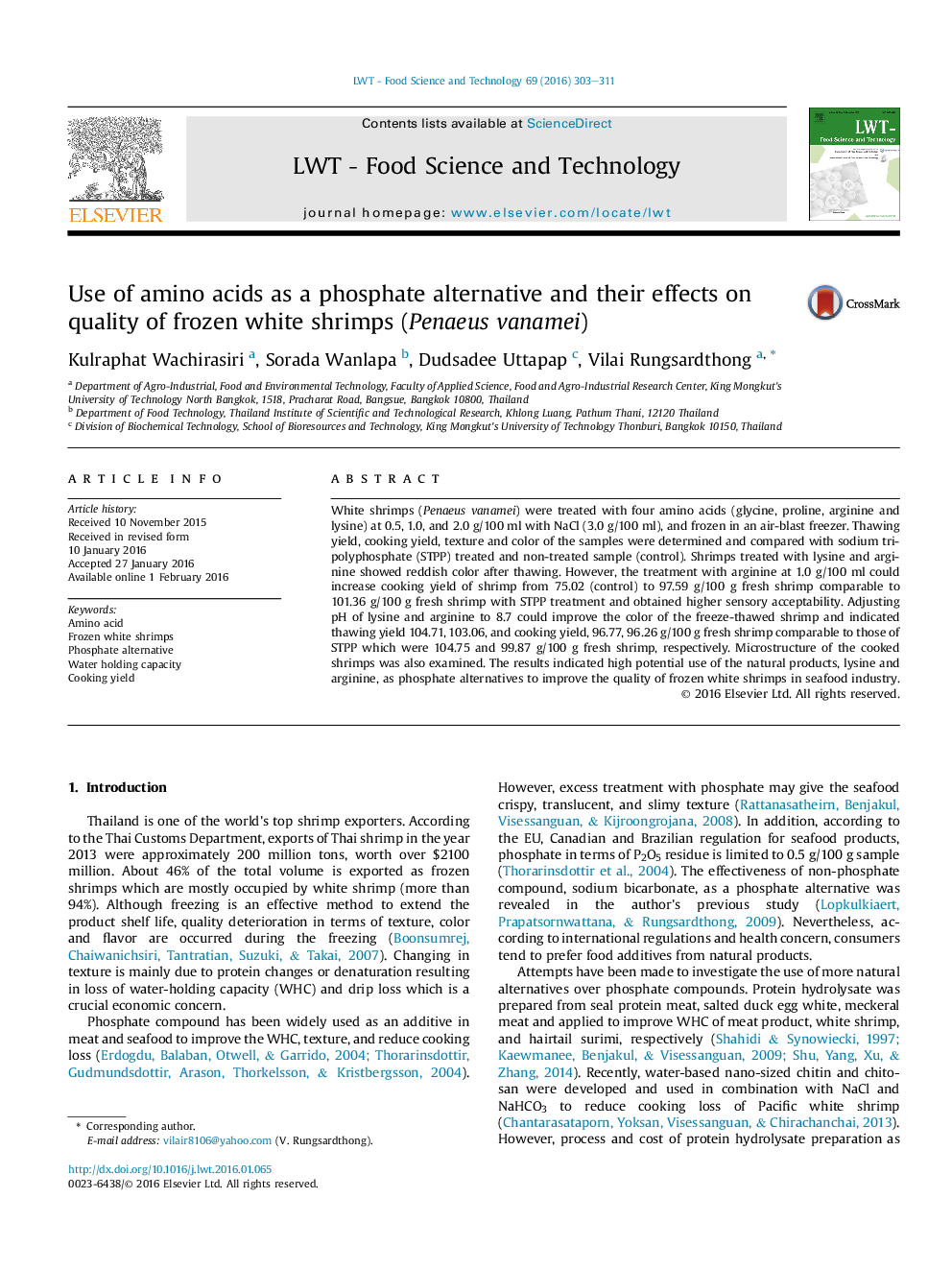| Article ID | Journal | Published Year | Pages | File Type |
|---|---|---|---|---|
| 4563750 | LWT - Food Science and Technology | 2016 | 9 Pages |
•White shrimps were treated with amino acid (AA) and salt before freezing.•Yield and texture of cooked/uncooked shrimps after a freeze-thaw were measured.•Lysine/arginine treatment could improve water holding capacity of the frozen shrimp.•Arginine treated shrimps got higher overall acceptance than phosphate treated shrimp.•Lysine and arginine could be used as phosphate alternative for shrimp freezing.
White shrimps (Penaeus vanamei) were treated with four amino acids (glycine, proline, arginine and lysine) at 0.5, 1.0, and 2.0 g/100 ml with NaCl (3.0 g/100 ml), and frozen in an air-blast freezer. Thawing yield, cooking yield, texture and color of the samples were determined and compared with sodium tri-polyphosphate (STPP) treated and non-treated sample (control). Shrimps treated with lysine and arginine showed reddish color after thawing. However, the treatment with arginine at 1.0 g/100 ml could increase cooking yield of shrimp from 75.02 (control) to 97.59 g/100 g fresh shrimp comparable to 101.36 g/100 g fresh shrimp with STPP treatment and obtained higher sensory acceptability. Adjusting pH of lysine and arginine to 8.7 could improve the color of the freeze-thawed shrimp and indicated thawing yield 104.71, 103.06, and cooking yield, 96.77, 96.26 g/100 g fresh shrimp comparable to those of STPP which were 104.75 and 99.87 g/100 g fresh shrimp, respectively. Microstructure of the cooked shrimps was also examined. The results indicated high potential use of the natural products, lysine and arginine, as phosphate alternatives to improve the quality of frozen white shrimps in seafood industry.
